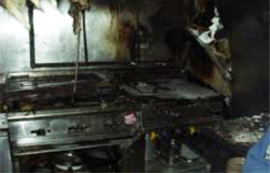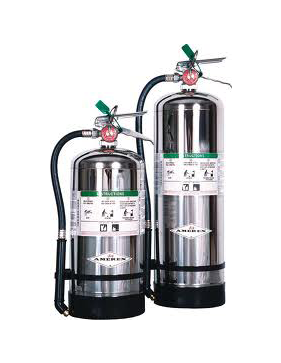
The 2004 FEMA report studies fire data from the year 2002. Here are a few of the findings:
In 2002 there were an estimated 7100 restaurant fires responsible for $ 116 million in property loss.
Less than one third of restaurant structure fires occurred in an area that was known to have a fire alarm and less than half of all fires occurred in an area with an automatic extinguishing system.
The FEMA study also looked at the causes of restaurant fires. Cooking of course was the single leading cause of fires at 64.2% but heating systems caused 9.9% of the fires and electrical systems, appliances and air conditioning systems accounted for another 8.6% of the fires. Interestingly the arson percentage was only 5.2% for restaurants but 18.7% of all other non-residential fires.
Another area that the study looked at was the time of day when restaurant fires are most common. Restaurant fires have a unique incidence pattern, coinciding of course with the daily cycles of the restaurant business. This is because so many of the restaurant fires are related to human error. The most likely time for a restaurant fire to start is between 9am and 10 am. This indicates that most fires are related to prep work before lunch. Interestingly, there is one more, smaller peak around 8:30 pm.

How about the role of extinguishing systems? Oddly enough, almost 54% of restaurant structure fires took place in an area with no automatic extinguishing systems. This really just means that most of the fires that occurred in the areas with fire suppression systems never became structure fires. They were put out in the kitchen. The real risk for the restaurant owner and for the restaurant insurance company is the fires that start in areas with no fire suppression systems. These are much more likely to become full structure fires. It is worth noting as well that almost 9% of all restaurant structure fires started where an alarm was present but did not function properly.

The big lessons in this data for the restaurant owner are to keep your fire suppression systems cleaned and functioning and to be sure to clean vents and other places where grease builds up on a regularly scheduled basis. Keep a close watch on kitchen activities, especially during the prep time as that is the most likely time for a kitchen fire to take hold. Keeping your fire risks down will help to reduce your restaurant insurance costs over time and may also keep your restaurant from a disaster.
The information in this blog was taken from a 2004 FEMA study of restaurant fires.




